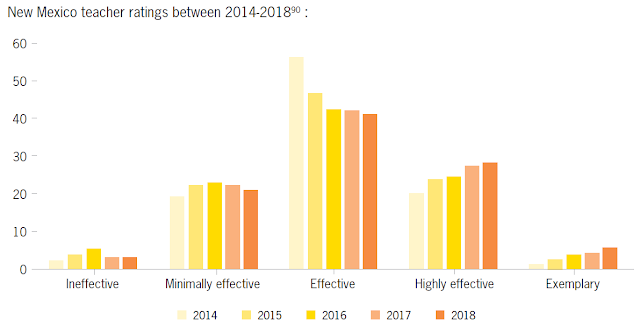Teacher Evaluation Systems that Actually Work
The quality of education or lack of it is often equated to inadequate resources. Lack of materials, a poor curriculum, being underprivileged are among the factors frequently cited as obstacles to good basic education. There is one factor, however, inside the classroom that can still make a significant difference even amidst dire conditions. It is the teacher. For this reason, numerous efforts have been made to design ways by which a teacher can be evaluated and then hopefully supported. Unfortunately, there is not much solid evidence of teaching evaluations that actually work. The National Council on Teacher Quality in the United States has recently released a report that cites six places that appear to have teaching eveluation systems that benefit both student learning, and teacher retention and effectiveness.
One of the six places is the state of New Mexico. Its teacher evaluation system especially caught my attention because it is definitely a system in which teacher evaluations are actually spread out. It is indeed different from a binary system in which teachers are either satisfactory or unsatisfactory. And the distribution definitely shows a trend that may be promising.
One of the six places is the state of New Mexico. Its teacher evaluation system especially caught my attention because it is definitely a system in which teacher evaluations are actually spread out. It is indeed different from a binary system in which teachers are either satisfactory or unsatisfactory. And the distribution definitely shows a trend that may be promising.
 |
| Above copied from National Council on Teacher Quality. Making a Difference: Six Places Where Teacher Evaluation Systems are Getting Results. OCTOBER 2018 |
It is the only state that rates more than one out of four of its teachers as either ineffective or minimally effective. Unlike preschool soccer tournaments, not every teacher in New Mexico gets a trophy. Not every teacher gets a satisfactory rating. The ratings, however, do not end as mere ratings, but guide the professional development that is offered to teachers. And the trend shows that the number of teachers receiving low ratings is decreasing with time while the number of teachers receiving either "highly effective" or "exemplary" is rising with time. There are various items that are factored in the six seemingly successful teaching evaluation systems. This appears to be a necessary ingredient for an evaluation system to yield beneficial outcomes. New Mexico uses student growth, observations, professionalism, student surveys, and teacher absenteeism. One may ask why absenteeism is included as a factor. Well, it maybe surprising but some teachers do miss a significant number of school days.
The teaching evaluation system in New Mexico does correlate with improved student achievement in the past few years. Although, as briefly mentioned in the report, the gains in students achievement in the recent years cannot be tied directly to the teacher evaluation system without a carefully controlled study. However, one thing should be quite obvious. The wide distribution in the teacher evaluation results means that professional development can be tailored to the needs of a teacher. This is not "one size fits all", but can in fact address the needs of a particular teacher. The report notes:
"Yes, New Mexico’s system allows the state to give teachers precise insight into areas of improvement. The state’s teachers receive their evaluation ratings as early as August, and these evaluation ratings are directly linked to professional development opportunities. Between 2015 and 2018, over 1,000 more teachers earned exemplary and highly effective ratings under New Mexicos' teaching evaluation system, NMTEACH."
Comments
Post a Comment